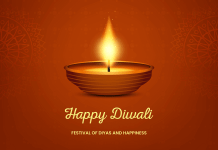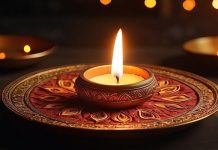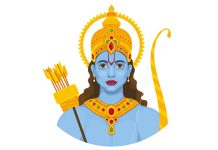Holi, a vibrant explosion of colors, infectious laughter, and joyous revelry, is a Hindu festival celebrated with unparalleled enthusiasm across India and by Hindu communities worldwide. This annual event, also known as the “Festival of Colors,” transcends religious boundaries, uniting people of all faiths and backgrounds in a celebration of spring, new beginnings, and the triumph of good over evil. But beneath the exuberant exterior of Holi lies a rich tapestry of mythology, traditions, and cultural significance that deserves deeper exploration.
From Mythology to Merriment: The Stories Behind Holi
There are two primary mythological narratives associated with Holi, each offering a unique perspective on the festival’s meaning.
- The Legend of Prahlad and Holika: This popular story tells the tale of a demon king, Hiranyakashipu, who possessed the power of immortality – except when he was neither indoors nor outdoors, neither in the day nor at night. His son, Prahlad, remained a devoted follower of Lord Vishnu, much to Hiranyakashipu’s fury. The king devised a plan to eliminate his son by ordering his sister, Holika, who was immune to fire, to enter a pyre with Prahlad. However, due to Prahlad’s unwavering devotion, Holika perished in the flames while the boy remained unharmed. The festival celebrates Prahlad’s survival and the victory of good over evil.
- The Legend of Krishna and Radha: This playful story centers around the Hindu deities Krishna and Radha. Krishna, known for his dark complexion, supposedly felt insecure about Radha’s fair skin. In a playful act, he smeared colors on her face, initiating a tradition of playful color throwing that continues to this day.
Beyond Mythology: The Rituals and Traditions of Holi
The festivities of Holi typically unfold over two days. The first night, known as Holika Dahan, involves lighting bonfires to symbolize the burning of the demon Holika. People gather around the fire, sing devotional songs, and often offer prayers for the destruction of negativity.
The second day, the main day of celebration, is a riot of colors. Revelers, young and old, take to the streets armed with colored powders (gulal) and water balloons filled with colored water (pichkari). Inhibitions are shed, laughter fills the air, and everyone becomes a canvas for vibrant hues. Singing, dancing, and feasting are integral parts of the celebration, creating a joyous and inclusive atmosphere.
The Colors of Holi: More Than Meets the Eye
The colors used during Holi hold symbolic significance:
- Red: Represents love, energy, and the triumph of good.
- Green: Symbolizes new beginnings, spring, and harmony with nature.
- Blue: Represents peace, tranquility, and the vastness of the universe.
- Yellow: Signifies happiness, prosperity, and optimism.
Holi by Another Name: A Celebration Across Borders
While widely known as Holi, this vibrant festival boasts various names across different regions and languages:
- Phaguwa: This name is commonly used in Nepal, signifying the beginning of spring.
- Basanta Utsav: This translates to “Spring Festival” in Hindi and is used in some parts of North India.
- Dol Jatra: Celebrated in Bengal, this name translates to “Swing Festival” and emphasizes the playful nature of the celebrations.
- Manjal Kudi: Celebrated in South India, particularly Tamil Nadu, this translates to “Yellow Powder Play” and highlights the use of yellow gulal during the festivities.
- Sindhi Holi: Celebrated by the Sindhi community, this version incorporates unique traditions like the burning of specific herbs believed to ward off evil spirits.
Beyond India: The Global Reach of Holi
Holi transcends geographical boundaries. Hindu communities worldwide celebrate this vibrant festival, bringing the spirit of joy and inclusivity to wherever they reside. In recent years, Holi has also gained popularity beyond the Hindu diaspora. Many countries organize public Holi celebrations, allowing people from all walks of life to experience the magic of this colorful festival.
The Enduring Significance of Holi
Holi is more than just a visual spectacle; it’s a celebration of life, renewal, and the human spirit’s ability to overcome adversity. It fosters social harmony by breaking down barriers of caste, religion, and age. The act of throwing colors signifies letting go of past grievances and embracing new beginnings. In a world often fraught with division, Holi serves as a powerful reminder of the beauty of unity and the joy of shared experiences.
So, the next time you encounter the vibrant hues of Holi, remember that it’s not just about the colors. It’s a celebration of life, love, and the enduring spirit of humanity.




























































